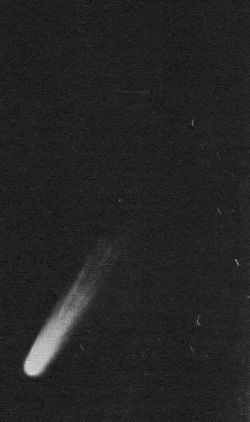Non-periodic comet facts for kids
Imagine a space rock that visits our neighborhood, the Solar System, just one time! These special visitors are called non-periodic comets. Unlike other comets that orbit the Sun again and again, non-periodic comets either pass through our Solar System only once, or they take an incredibly long time—hundreds, thousands, or even millions of years—to complete one trip around the Sun. Some might even leave our Solar System forever after their visit.
Some examples of these unique comets include C/1980 E1, C/2000 U5, C/2001 Q4 (NEAT), C/2009 R1, C/1956 R1, and C/2007 F1 (LONEOS).
What Are Non-Periodic Comets?
Non-periodic comets are comets that travel on paths that do not bring them back to the Sun often. They might only pass through the Solar System once in its entire history. This means they do not have a regular orbit around the Sun like Earth does.
Instead, their paths are very long and open-ended. It could take them hundreds, thousands, or even millions of years to return. Sometimes, they might not return at all, flying off into deep space forever.
How Are Non-Periodic Comets Named?
The official names for non-periodic comets always start with the letter "C". This "C" stands for "comet" and tells us that it is a non-periodic visitor.
If a comet was once seen but has since been lost or has disappeared, its name will begin with a "D". An example of a lost comet is 3D/Biela. This naming system helps scientists keep track of all the different comets they discover.
Related pages


